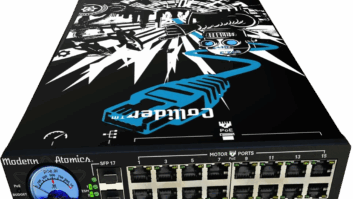El Segundo, Calif. – A study by TV display market
research firm iSuppli said the new power
regulations adopted this week by the California Energy Commission (CEC) could
cut aggregate annual power consumption of LCD TVs worldwide in half by the year
2013, if the standards are adopted universally.
If all of the 200 million LCD TVs set to be shipped in 2013
complied with the CEC standard, they would use a total of 64.4 billion kilowatt
hours for the year, compared to 126.8 billion if they didn’t, iSuppli estimated.
This represents a 50 percent decline in power consumption, the firm pointed out.
According to iSuppli, there are indications that other states may
follow California’s lead, and could eventually drive a chain reaction that
would spread throughout the country and the world.
The market research firm said the new CEC regulations conform
with U.S. Environmental Protection Agency (EPA) Energy Star 3.0 and 4.0
guidelines.
The Consumer Electronics Association (CEA) is warning that the
CEC mandates will have a deleterious impact on consumer choice and
technological innovation. The trade organization stated the regulations will
result in higher prices for consumers, job losses for Californians, and lost
tax revenue for the state.
“iSuppli believes the regulations could reduce California tax
revenue as consumers purchase larger-sized LCD TVs through out-of-state
channels. Furthermore, the regulations could cause a cessation in sales of
certain products in the state, such as larger-sized plasma televisions,”
iSuppli said in a statement on its findings. “However, with both the industry
and consumers already embracing greener televisions that consume less power,
the negative impacts of the CEC regulations are likely to be limited.”
“While the CEA has legitimate concerns, the CEC regulations
simply follow suit with the EPA’s Energy Star 3.0 and 4.0 guidelines,” said
Randy Lawson, display electronics senior analyst for iSuppli. “Television
makers already have been working to cut the power consumption of their products
so they can earn the coveted Energy Star label. Furthermore, iSuppli’s research
indicates that consumers increasingly are aware of power consumption issues,
and are likely to gravitate toward sets that use less electricity. Because of
this, television brands will still be offering a plethora of product choices
that will be attractive to consumers.”
Some 46.1 percent of U.S. consumers in the third quarter said
green factors influenced their television purchasing decisions, according to a
recent iSuppli consumer study. The same survey showed that 43.4 percent of
those consumers considered power savings to be the most important green
feature.
The television industry represents the key battleground for
reducing energy consumption in the consumer electronics business.
“Due to sweeping changes in the television technology that have
occurred during the past five or six years – changes which show no sign of
slowing down – the problem of energy efficiency has come become a paramount
consideration,” Lawson said. “The once-dominant CRT television set – with its
much smaller average screen size and lower brightness – consumed much less power
per year than today’s bright high-definition flat-panel sets.”
With regards to rising TV power consumption, the primary issue is
not the CRT-to-LCD shift itself, but rather the shift to larger screen sizes
that has accompanied that technology transition.
“At screen sizes smaller than 26 inches, there’s only a small
difference between the energy consumption of current LCD TV displays and
equivalent-sized CRTs, which maxed out at about 35 inches,” Lawson observed.
“However, larger screen sizes, such as the popular 37- , 40- , 42- and 50-inch
flat-panel screens, consume dramatically more energy than the older, much
smaller CRT screens.”
Falling prices on 40-inch and larger LCD and plasma TVs have
motivated huge numbers of consumers to upgrade their older televisions, iSuppli
observed.
Sales of sets with screens sized 40 inches and larger now
represent 27 percent of all televisions sold annually, according to the firm.
The energy consumption limits in California and elsewhere “definitely
will impact the path of technology development for flat-panel TVs, affecting
panel materials, LCD backlight designs and system audio/video electronics,” the
company said.
Many design changes will occur in the television electronics and
OEM-enabled features, including technologies like ambient light sensing to help
enable intelligent backlight drive options.
The largest energy-savings gains, iSuppli believes, will come
from redesigns of panel materials and backlight source electronics. One very
effective approach allowing power reduction will be the shift from traditional CCFLs
to LED backlighting. Use of direct-lit LED backlighting can yield power saving
of 40 percent or more for a typical 30-inch or larger LCD TV compared with
using a CCFL.













